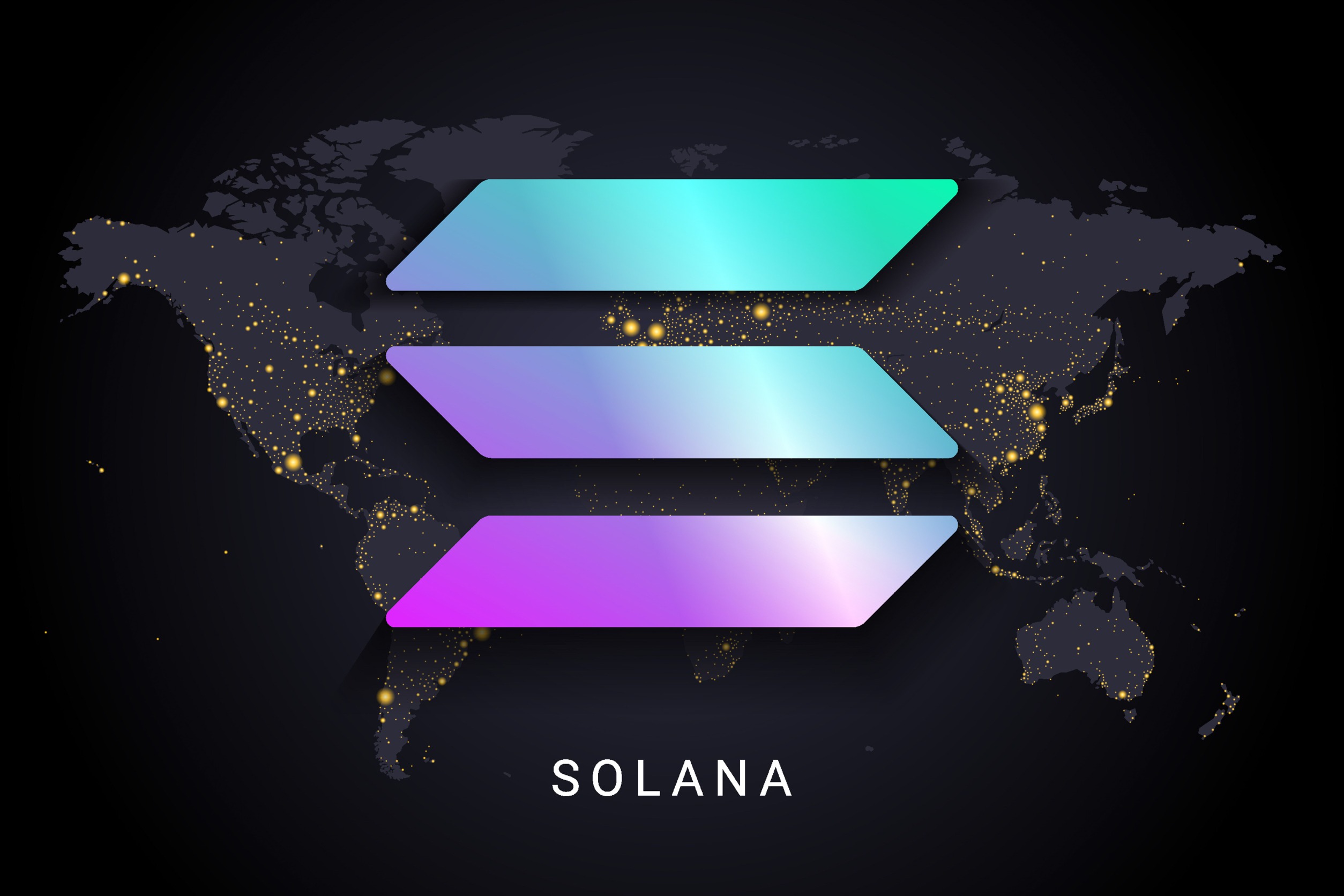featured
MeshBox White Paper Review

MeshBox just raised more than $13 million by way of a token backed fundraising program, with the goal being to use the funds raised to support the development and deployment of MeshBox technology, a parallel internet system that rests on the SmartMesh protocol.
Here’s a critical, objective look at the company’s White Paper.
Market Background – The Problem
The company’s White Paper opens with a discussion of the market and the corresponding opportunity that MeshBox seeks to take advantage of. The problem is broken down into a number of separate (but interlinked) elements, each of which is presented in the document.
The first is rooted in what SmartMesh refers to as a gap in global internet connectivity.
As stated in the White Paper, by 2050 the world’s population is going to exceed 10 billion. Right now, around 3.9 billion (or 56%) of the current population don’t have access to the internet. Using that metric, within 30 or so years, more than 5.6 billion people won’t have internet access.
The crux of MeshBox’s thesis here, then, is that the infrastructure that’s necessary to serve a steady and reliable internet connection to these individuals isn’t possible (both from a physical and a financial perspective) and that an alternative solution using new technology is necessary.
The company also highlights the fact that, while countries like China have adopted internet and mobile payment systems, in regions like North America and Europe this adoption is still to take place, not just because of social and consumer trends but also because of the lack of reliable connectivity in certain environments.
Outside of standard, geographical non-connectivity and non-adoption issues, MeshBox points out that failure can occur in regions that would normally have good internet access due to unforeseen circumstances.
Things like hurricanes, network congestion, tsunamis, earthquakes, etc. can all have a material impact on who and who cannot connect to the internet in a particular region and, when non-connectivity occurs, the problems caused are generally serious.
Another issue with current connectivity and this is something that we’ll look at in much more detail shortly, is rooted in the central point of failure concept. Using the US as an example, MeshBox points out in its White Paper that the reliance of US consumers on a handful of ISPs creates a system whereby not only can the failure of this small number of ‘control points’ result in non-connectivity, it can also serve as a barrier to innovation, price competition, that sort of thing.
The bottom line for this part of the paper is this: current network infrastructure is insufficient to carry forward into the next few decades and the investment that’s set to be made in this infrastructure isn’t going to be significant in bringing things up to date to a point where the above-outlined issues are resolved.
The Solution
The next part of the White Paper, then, introduces the company’s solution to the above-outlined issues.
The solution in question is rooted in a concept called Mesh networking.
Mesh networking is a system through which individual nodes can connect with one another to form a network that, because it’s comprised of interconnected (but otherwise individual) nodes, there’s no central point of failure.
It’s worth pointing out here that this isn’t a brand new concept. It’s not even really a new concept. Many ISPs actually provide a sort of internal, small-scale Mesh network system to consumers (if they want it) that can be used to improve connectivity in a Wi-Fi network.
What is new, however, is the integration of blockchain technology with a Mesh network.
In its White Paper, MeshBox outlines its solution here, but we’re going to go into this (again) in a little more detail shortly.
Right now, we’ll simplify things and say that the reason that blockchain technology partners so well with Mesh networking is an incentive. Previously, there was little incentive for an individual node to join and support a Mesh network. Think of it like this – why would an individual allow their smartphone to act as a node in a Mesh network when they’re getting little in return?
With blockchain technology, the introduction of an incentive is incredibly simple. MeshBox can link token type system to its Mesh network solution and, as the company’s outlines, this creates an environment in which:
“…users are encouraged to share their devices as nodes supporting mesh networks and can earn tokens in proportion to how much bandwidth they supply. Users need only make micropayments to leverage these nodes, and so there is mutual motivation allowing user-based mesh networks to self-propagate.”
And just as importantly, this is a decentralized network where no single point of failure exists. If a single node (or even numerous nodes) go down, the network remains functional. With this being the case, the issues outlined in the problem section above are solved.
It seems like a simple concept and an easy answer and it is – this is one of the reasons we like MeshBox and it’s one area in which the company gets a thumbs up for its White Paper – the company is developing a simple solution to a very large problem.
It’s often the simplest solutions that are the best.
And importantly, as MeshBox points out:
“None of the above qualities are prevalent in centralized operator networks.”
Up to this point, MeshBox has used its White Paper to outline the problems and to put forward a potential solution to these issues. However, as yet, the company hasn’t served up exactly what it intends to do as far as using its own technology to create the solutions is concerned.
SmartMesh – the underlying technology.
So at this point, we found ourselves asking the question – what does the company bring to the table that allows it to execute on the above-outlined, conceptual solution in the real world.
The next part of the White Paper answers this question.
It all starts with something called SmartMesh.
SmartMesh is both a technology in and of itself and the name of the company that created it, so keep that in mind as you move through this review. We’ll try to make it as clear as possible to which we are referring (the company or the tech) going forward.
So, SmartMesh the company, which is very closely affiliated with MeshBox in that the latter’s founder, Harry Xiao, was an early investor in SmartMesh and that Henry Wang, the founder of SmartMesh, is an advisor to MeshBox, has created a technology that, as we’ve already said, is also called SmartMesh.
So what’s SmartMesh?
I a nutshell, it’s a real-world application of the above-outlined blockchain based Mesh network solution.
Here’s SmartMesh’s own blurb, taken from its website:
“SmartMesh is a Token-based next-generation Internet protocol. By introducing third-party incubation, team-based cooperation, and development through partnerships with SmartMesh, a myriad of scenarios can come to life, building the future of the world’s IoT ecosystem.”
That sounds a bit jargony, but it’s really quite simple – the technology serves as a sort of protocol layer that provides the software (we’re saying software here to keep things simple) that allows multiple nodes to combine and join with one another to create a Mesh network. Further, it allows for the blockchain integration side of the system.
Here’s a snippet pulled directly from the White Paper (page 7):
SmartMesh has built-in blockchain Light Nodes, and expands the Lightning Network protocol to enable offline and off-chain crypto micropayments. Based on blockchain token incentives, SmartMesh nodes can self-organize and form elastic, decentralized, and self-repairing Mesh Networks, providing higher near field speed and bandwidth than the Internet, and they are usually established free of cost. Mesh networks are likely to become established networks running parallel to the existing Internet.
This is an important aspect of the entire system.
Bitcoin is having issues right now with transaction times and fees. These issues are rooted in scalability and the problems tied to network congestion. Above, at the start of this review, we pointed out that network congestion problems are some of the issues that MeshBox seeks to resolve and it’s the features outlined in the above snippet that allows for this resolution.
Basically, off chain transactions negate the potential for congestion.
And this results in one short but important note:
“Mesh networks are likely to become established networks running parallel to the existing Internet.”
That’s key to this whole White Paper and it’s a point that we think MeshBox really needs to try and hammer home to market participants. The solutions afforded by this technology allow for the realization of the parallel internet concept – a concept that’s long been hailed as solving global connectivity issues but that – as yet – has never been fully realized.
The reason it’s not been realized? The lack of a suitable technology to support token based incentivization.
Now blockchain is here, MeshBox, through SmartMesh, is in a position to become the first and only company to finally solve the parallel internet problem. As a final note on SmartMesh, the MeshBox White Paper highlights that SmartMesh App V1 was released on December 29, 2017, and that, right now, there are more than 100 thousand SmartMesh community users.
Enter MeshBox
So, to this point, the White Paper has outlined the issues, covered the solution (in concept, at least) and presented its own version of the solution in the form of the SmartMesh protocol layer that was developed by SmartMesh the company.
Anyone reading through this White Paper is probably asking by now – what’s MeshBox?
And we’re no different.
After all, this is all about MeshBox, so what is it and where does the eponymous technology come into the equation?
The thing is, in order to fully grasp what MeshBox is and how it fits into this picture, it’s important to grasp the issues and, in turn, how SmartMesh works to solve these issues. That’s why it’s taken eight pages of the White Paper to get to the section that details MeshBox as a technology.
That’s not a bad thing (we are, after all, reviewing this White Paper) but we would have liked a basic introduction ahead of this point.
Anyway, let’s finally get to it.
We’re going to use the company’s description here as an introduction but we’ll cut it down a bit.
At the advent of the internet, two guys, Joseph Winton (Vint Cerf) and one Robert Elliot Kahn invented the TCP/IP protocol. Then, CISCO, HUAWEI, and other device manufacturers developed router equipment based on this protocol. Finally, telecoms companies like AT&T built up the internet through investment in the infrastructure that supports it.
The White Paper wants readers to look at this above-outlined development timeline as a legacy system and it makes a good argument.
Why is this important?
Because SmartMesh and MeshBox form the base layers of a new version of the existing framework. Put simply, SmartMesh plays the role of the TCP/IP protocol, while MeshBox is the routing hardware side of the equation.
Here’s how the White Paper explains it:
SmartMesh:
It is the basic protocol of the Mesh Network – equivalent to the TCP/IP protocol stack on the Internet, allowing all the Mesh network nodes to run.
MeshBox:
It is the data routing protocol of the Mesh Network — the equivalent of IGP, BGP file exchange protocol running on Cisco only on Mesh- and the equivalent of the HTTP standard on the Internet, running on Box hardware instead.
So that’s everything outlined from a conceptual standpoint.
It’s at this point that the White Paper gets technical.
The Network Mechanics.
Mesh Networks are composed of access nodes which collect and distribute information and data. Mobile phones, smart devices, and various IoT devices are the terminal nodes of the Mesh network, and the information exchange depends on the Mesh network users and clients.
Take a look at the image below to get an idea how all this fits together:
Source: MeshBox White Paper
So, to explain the above image, the MeshBox layer of the network (which is comprised of a number of physical MeshBox units) connects to the internet and serves as a sort of intermediary layer which a network of smartphone nodes can then connect to.
The file in the above image is simply representative of a bit of data that can be transferred locally within the network.
So this is where the solutions layer comes in:
Where access to the internet is restricted or inhibited by various conditions, network connections enabling channels for the exchange of information and data can still be established with the worldwide distribution of MeshBox and its associated SmartMesh technologies to establish global connectivity.
And…
Where unrestricted access to the Internet exists, deployed MeshBox devices can augment the existing network with additional range, functionality, performance, and security. Networks formed employing MeshBox will empower users with more robust P2P communication, greater stability, and enhanced privacy and security.
In terms of access technology, the first iteration of the MeshBox system will allow for access through Wi-Fi and Bluetooth. Beyond that, the second phase will expand to include Swarm, Whisper and a number of newly expanded protocols for SmartMesh and MeshBox.
Token Mechanics
Take a look at the two images below:
Image one
Image two
Both of these images are pulled directly from the White Paper and each shows a different process through which microtransactions (rooted in blockchain technology) play a role in the parallel internet concept.
The first represents a sort of data access payment system, through which smartphone users can pay for internet access with the MeshBox serving as a sort of intermediary access layer.
The second image illustrates how content can be shared across the network, with data flowing through the MeshBox and to smartphone nodes. The transaction process comes in to play here as the smartphone users pay for access to content.
As a note here, it’s worth mentioning that this second use case is one of the real strong points of this sort of network in our eyes. Users can create content and then charge for access through the Mesh network and users who want access have an easy mechanism through which they are able to subscribe to (and, in turn, pay for) the content they desire.
Use Cases
The next part of the White Paper outlines some potential use cases for this technology and it’s a section that we’re not going to spend too much time on for the purposes of this review.
Why?
Because the use cases are really only limited by imagination. There are so many ways in which this technology can be put to use and so many problems it can solve, assuming the company can execute on its strategy going forward.
To touch on some of these, however, and as outlined in the White Paper, MeshBox sees a number of initial applications of its technology including:
- Concerts
- Office file sharing
- Shared community networks
The Pilot Program
This is a major part of the White Paper in our opinion. It details a pilot program that the company is running, which is designed to prove the concept ahead of full-scale commercialization.
As pulled from the paper:
(the program is) …in the Vanuatu Islands in the South Pacific, where there are no network lines, and the electricity supply is insufficient. With the help of several MeshBoxes with broadcasting radii of 2km, they can be deployed on the island, and harnessing solar power can consume minimal electricity, all the while covering every corner of the island with a signal.
The outcome of this program is going to be crucial as far as insight into the company’s ability to execute on the rollout of its technology is concerned as well as the functionality of both the SmartMesh system and the MeshBox hardware in the real world.
The Roadmap
The image below is pulled directly from the White Paper and illustrates the company’s roadmap.
The first point to make here is that MeshBox is in the very early stages of its roadmap as things stand. That’s not necessarily a bad thing (as noted in the introduction, the company just raised the capital it needs to execute on its growth phase) but it does mean that there’s a degree of risk associated with a position in the company at this stage.
With that said, the existing SmartMesh technology and the close links between SmartMesh the company and MeshBox (again, the company) serve to mitigate a large portion of this risk.
So, what’s our take on the roadmap?
Well, it’s aggressive – that’s fair to say. The company basically plans to get from the starting line to the point at which it initiates the network deployment of MeshBoxes in numerous global regions – China, USA, Indonesia and more – within two years.
For us, however, this aggression isn’t necessarily a bad thing – assuming the company has the ability to execute on it.
And as is generally the case, the ability to execute on a strategy is rooted in the quality of the team that’s driving a company.
The team
Which brings us to the final section of this review – the leadership section.
The core members are as follows:
Xiao Yongquan (Harry Xiao): Founder
Xiao Yongquan was one of the early internet pioneers when China Mobile’s internet capabilities were in their infancy. He has more than 15 years of entrepreneurial experience and created a leading mobile phone gaming platform before working with Samsung andZero2IPO Group.
Peter Yan: MeshBox Chief Scientist.
He was Chief Engineer of the HUAWEI American wireless interconnection laboratory, the Chief Scientist of the business routing business of Bo Tong, and the architect of the Freescale system.
Cai Zhihong: Chief Architect.
Cai Zhihong is the former technical director of the CNNIC China Internet Information Center, was an HP blockchain senior consultant, has more than 15 years of experience in software development, was an early blockchain developer, and has an in-depth understanding of Ethereum, the IPFS blockchain project, consensus mechanisms and code implementation.
Daniel Finn: Chief Marketing Officer
Founder of New Dynamik Ltd., and proficient in Mandarin Chinese and English, Dan has rich experience in digital marketing, media production, and online training. In addition to working on branding and marketing campaigns for clients like Volkswagen and Skoda, he has also worked in the technology sector as a fintech product developer and trained dozens of companies including Lenovo, LG, ABB, China Mobile and many more.
The advisory team is also strong – the highlights are as follows:
Wang Qiheng (Henry Wang):
Founder of SmartMesh, President of the International Blockchain Application Federation, Chairman of the AAMA Blockchain, and world leader in offline networking and social communications.
David Cohen:
Founder of Dcntral.ai, Executive member of the IOTA Foundation and HashGraph Advisor. David has deep insight into the development trends of the Internet of Things, Blockchain and Artificial Intelligence. He has extensive influence in the blockchain community.
Our view on the team
In our eyes, this is an incredibly strong team. The combination of those who drove SmartMesh forward and the advisory team (especially Cohen) should really serve to support the aggressive strategy outlined in the above illustrated roadmap.
In other words, it’s an aggressive and ambitious set of targets but with the above-outlined team steering the ship, we can’t see any immediate concerns associated with MeshBox’s ability to execute on the company’s game plan.
Token Structure
Before wrapping up, let’s quickly touch on the token structure.
The MeshBox infrastructure rests on tokens called MESH, of which 10 billion were issued and for which the breakdown of the total non-consumable tokens is as illustrated in the image below:
Our final verdict
Having read through this White Paper and broken down what MeshBox is trying to achieve, our final verdict is that we are very impressed with the company and the way it has gone about executing on its game plan.
The company has developed an incredibly elegant solution to a very large problem and if it can execute on its plan to solve this problem (which, as outlined above, we think it can given the strength of the team behind it) it could be a very rewarding exposure for investors looking to take a position in the creation of the next generation of internet and global connectivity.
Disclaimer: This article should not be taken as, and is not intended to provide, investment advice. Please conduct your own thorough research before investing in any cryptocurrency.
Crypto
BNB Price Surges Past $300, Faces Crucial $339 Hurdle: What’s Next?

BNB price has noted significant gains over the past few days, surging past the psychological resistance of $300. The native cryptocurrency of the Binance Exchange has surpassed Solana to regain its position as the fourth-largest cryptocurrency by market cap. The digital currency has been rallying lately with a 7-day profit of more than 15%. Additionally, BNB has clocked a phenomenal gain of 38% in the month to date.
Binance Coin Outlook
BNB price has been on a strong bull run for the past week, breaking out of its consolidation. Even so, the asset has experienced a correction in its uptrend over the past 24 hours but remains above the crucial level of $300. BNB’s total market cap has decreased by 4% over the past day to $48 billion, while the total volume of the asset traded over the same period dipped by about 15%.
Over the past year, Binance Coin has had to cope with Fear, Uncertainty, and Doubt (FUD) on the back of the regulatory troubles of its underlying exchange. Earlier, the BNB price touched a low of $223.50, a few days after its former CEO, Changpeng Zhao, pleaded guilty to money laundering charges. However, the cryptocurrency has managed to rebound 46% in value since then.
The recent price rally has been associated with various positive developments in the Binance ecosystem, including the Introduction of the Isolated Margin Auto-Transfer Mode. This feature enables…
Altcoins
Solana Price Surges Beyond $100, Dethroning Ripple and BNB To Secure Fourth Place

Solana price performance in recent times has been remarkable, surpassing Ripple and Binance Coin to become the fourth-largest cryptocurrency by market cap. The SOL price breached the critical level of $100 for the first time since April 2022 over the weekend to imbue optimism among investors. However, the altcoin has corrected by 7%, suggesting that the market is overheated. At the time of writing, the ‘Ethereum killer’ was trading slightly lower at $111.60.
SOL Outlook
Solana price has made a significant recovery over the past few weeks, climbing above the psychological level of $100. The altcoin has been one of the best-performing assets this year, extending its year-to-date gains to more than 1,025%, with more gains recorded in the past month alone. However, even with such growth, analysts have noted that Solana has a bleak chance of topping its ATH of $260.
The reason behind this is the increase in supply relative to its value. In November 2021, when the Solana price hit its all-time high of $260, its total market capitalization was around $78 billion. Despite the value of the crypto asset being less than half of what it was at the top, its market cap is currently hovering near $50 billion.
This has been brought about by the increase in the Solana supply by more than 100 million SOL over the past two years. According to some analysts, for the altcoin to retest $260, its…
Altcoins
Solana Price Skyrockets to 20-Month Peak Amidst Memecoin Frenzy

Solana price has noted significant gains over the past few weeks, climbing to its highest level since April 2022. The ‘Ethereum Killer’ almost topped the crucial level of $100 on Friday, before pulling back slightly. The asset’s recent surge has catapulted Solana’s total market cap to $39.6 billion, ranking 5th after and above BNB and XRP, respectively. Solana has jumped by more than 22% in the past week and more than 80% in the month to date. At the time of writing, SOL price was trading 0.90% lower at $93.10.
Catalysts Behind SOL’s Rally
Solana price has been on a strong bull run over the past few days, rocketing to its highest level in 20 months as the network benefits from the substantial activity and strong interest in memecoins. The SOL token, the native digital asset of the high-performance blockchain platform Solana, has shown some serious strength over the past few weeks, outperforming all the altcoins in the market.
The recent surge in the Solana price has been linked to heightened on-chain activities on the Solana blockchain. Notably, the ongoing hype for the blockchain’s speedy transactions, cheap fees, and a lottery of meme coin issuances has buoyed SOL’s on-chain activity. Metrics have revealed that Solana has been the strongest draw among on-chain traders, with trading volumes and network fees outperforming Ethereum- the largest altcoin by market cap.
Cited figures provided by DeFi aggregator DeFiLlama…
-

 Blogs6 years ago
Blogs6 years agoBitcoin Cash (BCH) and Ripple (XRP) Headed to Expansion with Revolut
-

 Blogs6 years ago
Blogs6 years agoAnother Bank Joins Ripple! The first ever bank in Oman to be a part of RippleNet
-

 Blogs6 years ago
Blogs6 years agoStandard Chartered Plans on Extending the Use of Ripple (XRP) Network
-

 Blogs6 years ago
Blogs6 years agoElectroneum (ETN) New Mining App Set For Mass Adoption
-

 Don't Miss6 years ago
Don't Miss6 years agoRipple’s five new partnerships are mouthwatering
-

 Blogs6 years ago
Blogs6 years agoEthereum Classic (ETC) Is Aiming To Align With Ethereum (ETH)
-

 Blogs6 years ago
Blogs6 years agoCryptocurrency is paving new avenues for content creators to explore
-

 Blogs6 years ago
Blogs6 years agoLitecoin (LTC) Becomes Compatible with Blocknet while Getting Listed on Gemini Exchange




















